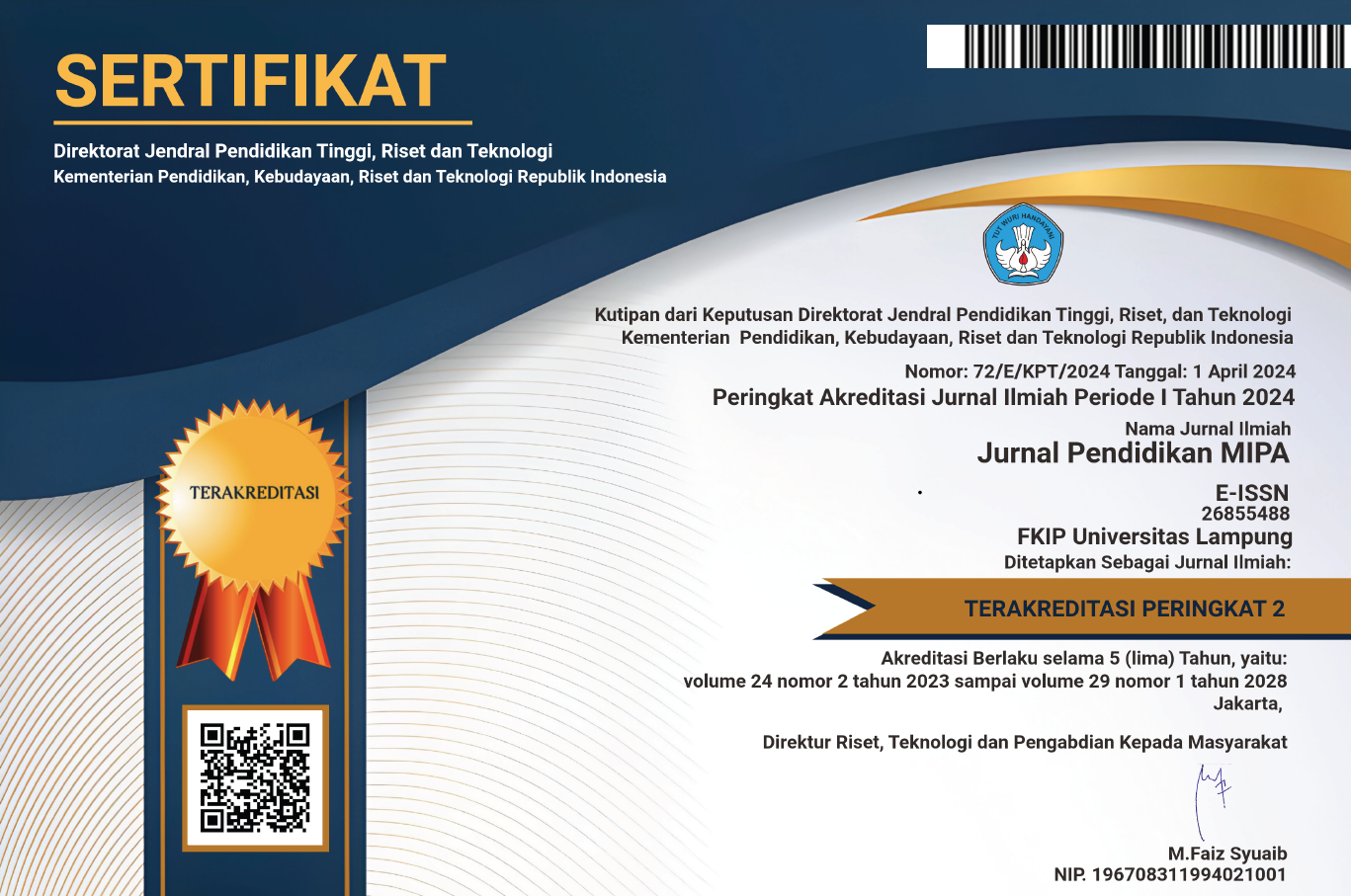Beliefs, Actual Practices, and Perceptions on the Implementation of 4C Skills Integrated STEM Curriculum in Online Mathematics and Science Learning
 Country:
Country:
(1) Universitas Negeri Surabaya, Indonesia
(2) Universitas Negeri Surabaya, Indonesia
(3) Universitas Negeri Surabaya, Indonesia
(4) Universitas Negeri Surabaya, Indonesia
(5) Universitas Negeri Surabaya, Indonesia
This study tried to find out about beliefs, actual practices, and perceptions of educators and students of the Faculty of Mathematics and Natural Science, Universitas Negeri Surabaya, Indonesia on online education they experienced. The study focused on 4C skills being embedded in STEM curriculum implemented to some courses. The samples were 17 courses including corresponding educators and students who enrolled the courses. Data were collected by observing activities in LMS and synchronous web meeting and by giving questionnaires to the educators and the students. The results informed that educators and students were able to adjust and adapt to online learning with some shortcomings. Educators’ belief that good online courses with 4C skills-integrated STEM curriculum is possible to conduct with some refinements. Students were able to follow courses which include 4C skills with the context of basic STEM knowledge. However, they did not prefer the use of LMS in their learning.
Keywords: 4C skills, STEM, online education, mathematics and science
Berg, G., & Simonson, M. (2016). Distance learning. Encyclopedia Britannica.
Bonk, C. J., Wisher, R. A., & Lee, J. Y. (2004). Moderating learner-centered e-learning: Problems and solutions, benefits and implications. In Online collaborative learning: Theory and practice (pp. 54–85).
Easton, S. S. (2003). Clarifying the instructor's role in online distance learning. Communication Education, 52(2), 87–105.
Erduran, S. (2020). Science education in the era of a pandemic. Science & Education, 29(2), 233–235.
Fraenkel, J. R., Wallen, N. E., & Hyun, H. H. (2012). How to design and evaluate research in education (Vol. 7, p. 429). New York: McGraw-Hill.
Horn, M. B., Staker, H., & Christensen, C. M. (2014). Blended: Using disruptive innovation to improve schools. San Francisco: Jossey-Bass.
Keengwe, J., & Kidd, T. T. (2010). Towards best practices in online learning and teaching in higher education. MERLOT Journal of Online Learning and Teaching, 6(2), 533–541.
Kelley, T. R. (2016). A conceptual framework for integrated STEM. International Journal of STEM Education, 3(1).
Kim, K. J., & Bonk, C. J. (2006). The future of online teaching and learning in higher education. Educause Quarterly, 29(4), 22–30.
Latchem, C., & Jung, I. (2009). Distance and blended learning in Asia. Routledge.
Laurie, H., & Heikoop, W. (2016). Online learning strategies. University of Toronto. Retrieved from https://teaching.utoronto.ca/teaching-support/peer-observation-of-teaching/part-iii-tools-instruments-observation/
Lee, M. H., Chai, C. S., & Hong, H. Y. (2019). STEM education in Asia Pacific: Challenges and development. The Asia-Pacific Education Researcher, 28(1), 1–4.
Marginson, S., Tytler, R., Freeman, B., & Roberts, K. (2013). STEM: Country comparisons. Report for the Australian Council of Learned Academies. Retrieved February 23, 2019.
Mishra, P., & Koehler, M. J. (2006). Technological pedagogical content knowledge: A framework for teacher knowledge. Teachers College Record, 108(6), 1017–1054.
Mnguni, L., & Mokiwa, H. (2020). The integration of online teaching and learning in STEM education as a response to the COVID-19 pandemic. Journal of Baltic Science Education, 19(6A), 1040.
Moore, M. G., & Anderson, W. G. (Eds.). (2007). Handbook of distance education (pp. 89–108). Mahwah, NJ, USA: L. Erlbaum Associates.
Novak-Pintarič, Z., & Kravanja, Z. (2020). The impact of the COVID-19 pandemic in 2020 on the quality of STEM higher education. Chemical Engineering Transactions, 81, 1316–1320.
P21. (2007). Framework for 21st century learning. Retrieved from http://www.p21.org/about-us/p21-framework
Sammons, M. (2003). Exploring the new conception of teaching and learning in distance education. In M. G. Moore & W. G. Anderson (Eds.), Handbook of distance education.
Smith, E., & White, P. (2019). Where do all the STEM graduates go? Higher education, the labour market and career trajectories in the UK. Journal of Science Education and Technology, 28(1), 26–40.
Trilling, B., & Fadel, C. (2009). 21st century skills: Learning for life in our times. John Wiley & Sons.
Warner, D., Christie, G., & Choy, S. (1998). Readiness of VET clients for flexible delivery including online learning. Brisbane: Australian National Training Authority.
Refbacks
- There are currently no refbacks.

This work is licensed under a Creative Commons Attribution-ShareAlike 4.0 International License.






